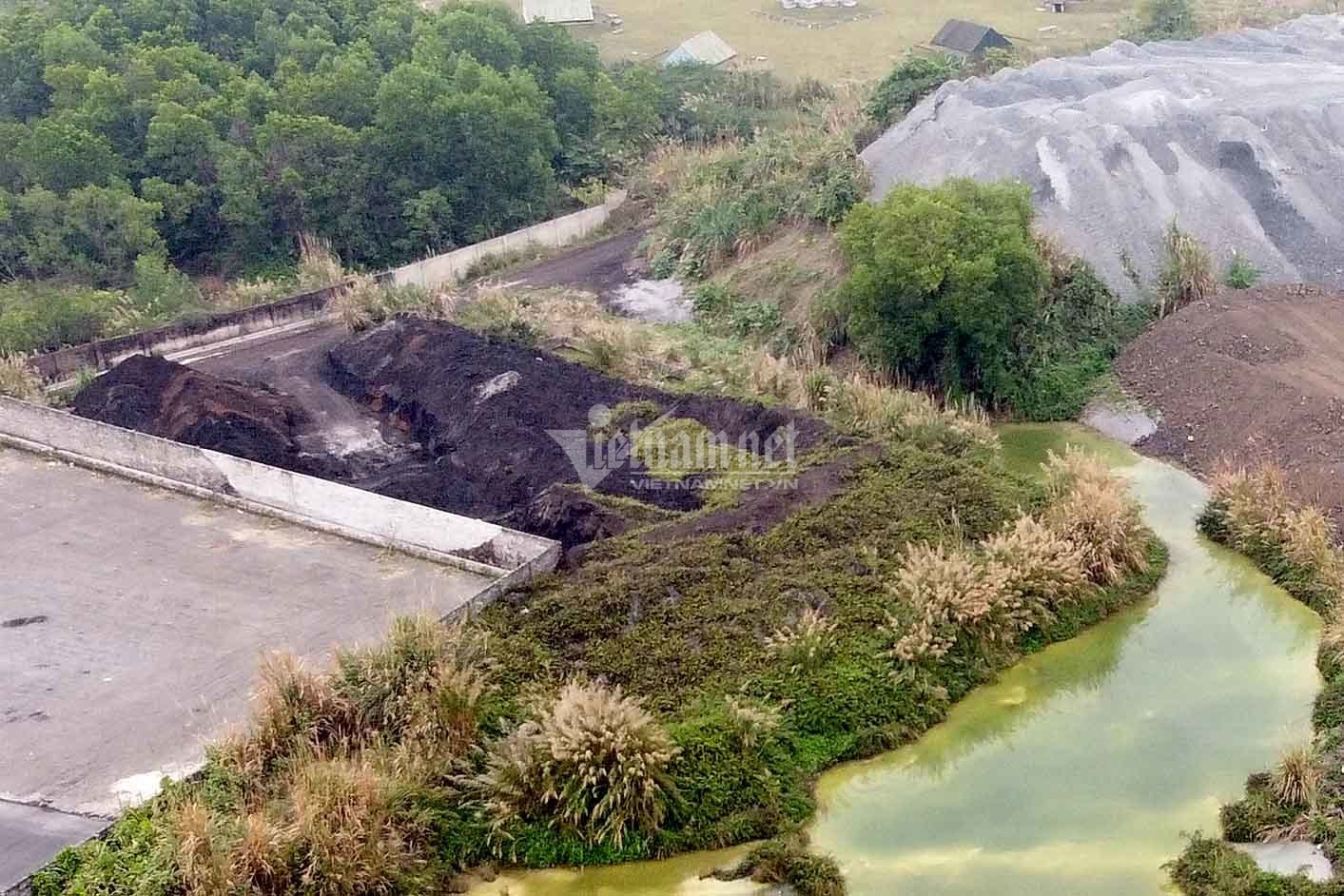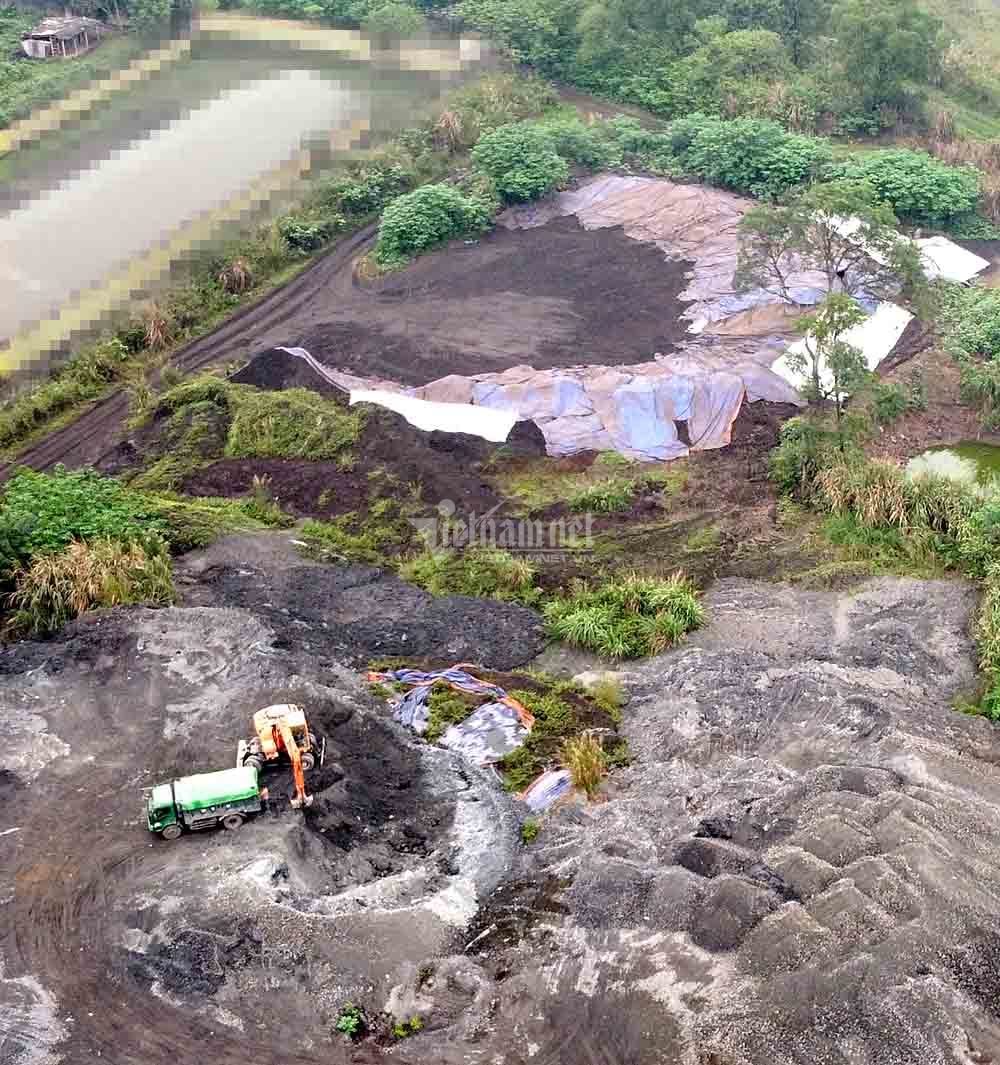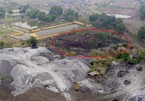 |
|
A photo taken on February 22.
|
A Tisco representative confirmed that the company has covered more than 10,000 tons of furnace dust with tarpaulin and will carry out solutions to completely deal with the dump.
VietNamNet's reporters returned to Thai Nguyen on March 17 and observed that the furnace dust was covered by a tarpaulin. However, this was a temporary measure.
Mr. Ha Tuan Hung, the company’s chief technician said that the total amount of remaining kiln dust is more than 10,000 tons.
"This is a problem left from the previous stage. We are trying to solve it by many different measures, one of which is speeding up the construction of the furnace dust dump, which was decided by the company in late 2020," Hung said.
Under the government Decree 38/2015 and the Ministry of Natural Resources and Environment (MONRE) Circular 36/2015, furnace dust generated during steel refining is listed as a hazardous waste.
But thousands of tons of furnace dust at the Thai Nguyen Iron and Steel JSC have been left uncovered outdoors in central Thai Nguyen province.
Looking from above, the furnace dust dumping ground is dozens of meters long and two meters high. It is located near Cach Mang Thang Tam Road, the major route of Thai Nguyen City, and near a 20-07D vehicle registration center in Cam Gia Ward.
This situation has been happening for a long time. Notably, near the mountain of waste were pools of waste water with floating green and yellow scum on a surface area of nearly 100 square meters.
 |
|
A photo taken on March 17.
|
Tisco general director Nguyen Minh Hanh told VietNamNet that the company is taking measures to completely handle the furnace dust that VietNamNet mentioned.
Asked why the huge waste ground has been left uncovered in the open air, Hanh said it was covered with canvas that was weathered by wind and rainwater.
The representative of the Department of Natural Resources and Environment of Thai Nguyen province told VietNamNet that the furnace dust discharged from iron and steel processing is a hazardous waste that must be properly managed according to the required technical process.
“The waste source owner must register with the Department of Natural Resources and Environment and sign contracts with licensed units to treat or self-treat the waste,” the representative of the local Department of Natural Resources and Environment said.
According to Thai Nguyen Department of Natural Resources and Environment, two factories of Tisco that generate furnace dust include the Luu Xa steel refining factory and the iron refining plant.
The Luu Xa steel refining factory discharges 3,600 tons of furnace dust a year on average. This factory has collected and stored furnace dust in warehouses and dumps of Tisco, including a furnace dust yard with an area of 1,900 square meters at Tisco’s power enterprise and a dust storage area of 540m2 at the iron refining plant.
It was reported that in 2020 the Luu Xa steel refining factory discharged more than 2,500 tons of furnace dust. Of this volume, 1,500 tons have been treated, while the remaining amount has been stored at the above sites.
As for the iron refining plant, the local Department of Natural Resources and Environment determined that the average amount of furnace dust generated is about 4,800 tons a year. The plant was allowed to self-treat dust in the furnace. In 2020, the plant treated more than 6,000 tons of furnace dust.
In January 2021, the plant suspended this operation and planned to hire others to treat the waste. The remaining amount of furnace dust is gathered in a warehouse with an area of 500 square meters and an outdoor yard covered with tarpaulin.
 |
|
Furnace dust discharged from the steel refining process of Tisco. (Photos taken on Feb. 22)
|
Tisco general director Nguyen Minh Hanh said the company recently signed a contract with Viet Bac Color Metal on collecting and treating the remaining furnace dust. The cost is VND600,000 per ton.
In late 2020, Tisco decided to build a warehousing facility to contain furnace dust. It is expected to be completed in the first quarter this year. However, due to the Covid-19 pandemic, the project may be completed in the second quarter of this year.
In the latest news, Chief of the Vietnam Environment Administration’s Office (Ministry of Natural Resources and Environment) Ho Kien Trung said that the relevant agencies are in the process of verifying and gathering documents on the open-door dust waste mountains in Thai Nguyen.
On March 19, Chairman of Thai Nguyen province Trinh Viet Hung also told VietNamNet that he had instructed relevant agencies to verify and deal with it.
Mr. Nguyen The Giang, Deputy Director of the Department of Natural Resources and Environment of Thai Nguyen province, said he had signed a document to establish a team to check the observance of the law on environmental protection of Tisco.
Trinh Van Tuyen from the Vietnam Academy of Science and Technology said that if the owners of the waste sources still cannot treat the waste, they must preserve furnace dust as a hazardous waste. The waste yard must meet standards of permeability, layers, and covering to prevent pollution of surface and underground water, he said.
Doan Bong

Tons of hazardous waste left uncovered in Thai Nguyen province
Thousands of tons of furnace dust at the Thai Nguyen Iron and Steel JSC (Tisco) have been left uncovered outdoors in central Thai Nguyen province.